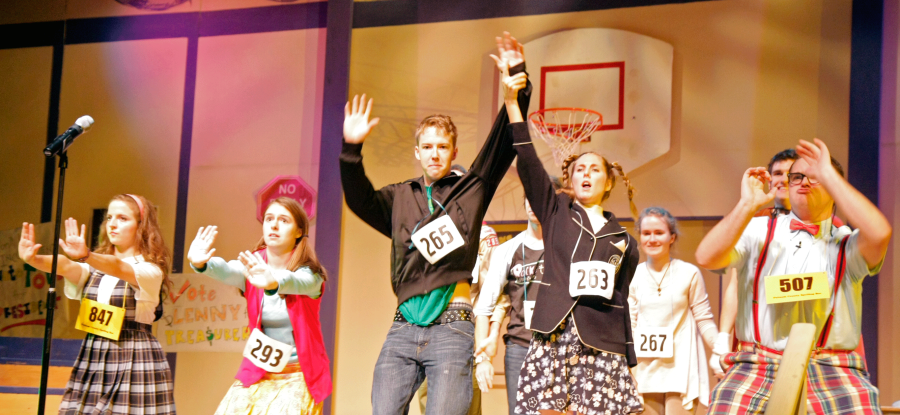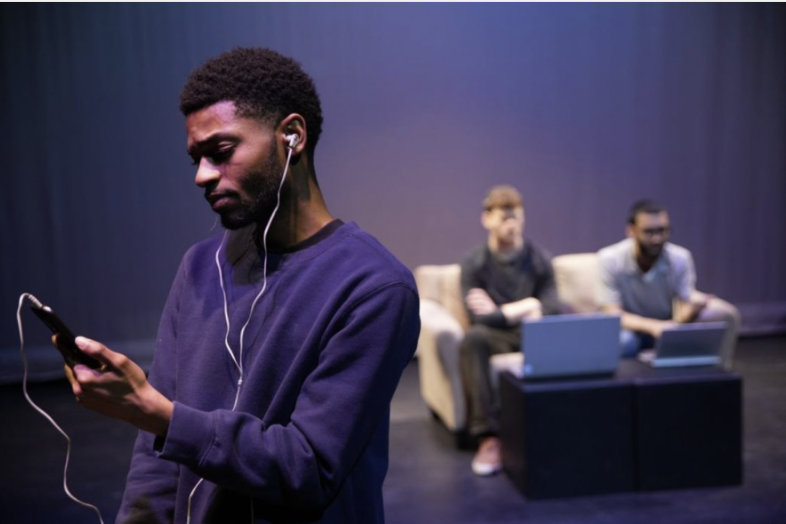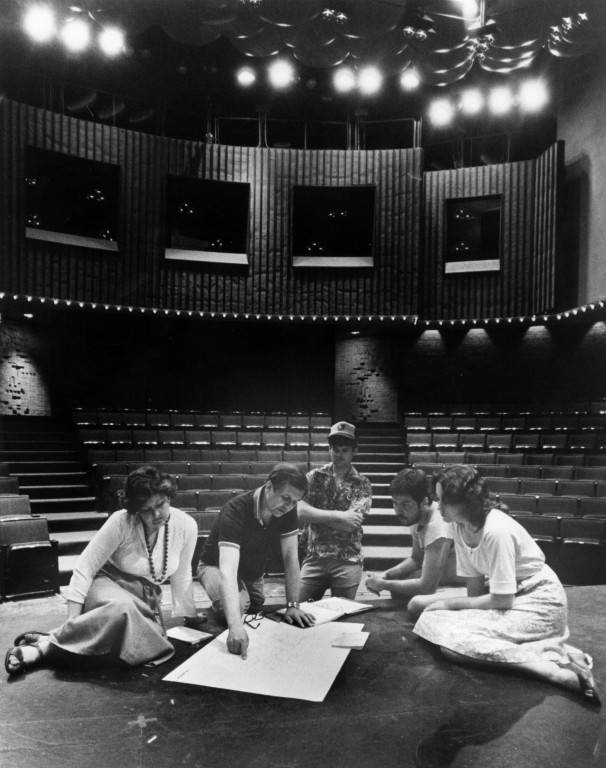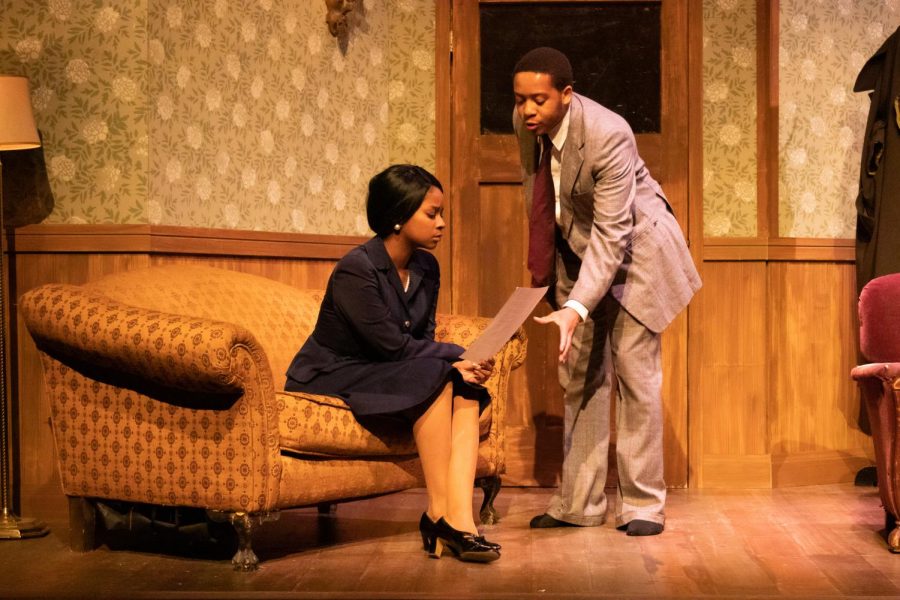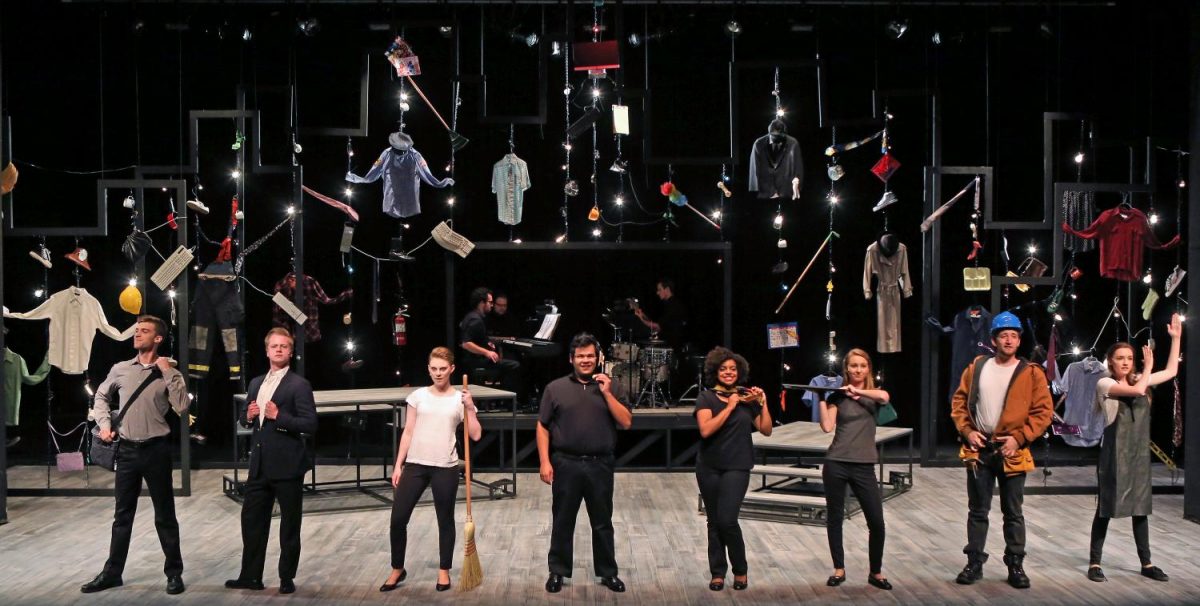What happens when a novelist invites a clairvoyant to a dinner party to inspire his next book? Madness and hilarity ensues.
“Blithe Spirit” is Helfaer Theater’s opening show for the 2016-17 school year to kick off the theater’s 42nd season. The show, which is in its final week of rehearsal, opens on Thursday, September 29 at 7:30 P.M. and runs through October 9.
This season’s lineup of productions revolve around a central theme, “Worlds Collide.” The show is a literal take on the theme, merging the spirit world with reality in a comedic turn of events when Charles Condomine, a novelist in the 1940s British countryside, invites Madame Arcati, a medium, into his home to help him write a novel about a homicidal medium.
Nadja Simmonds, a junior in the College of Communication, plays Madame Arcati. No one really believes in Arcati’s abilities. She was only invited so Condomine could observe and use her as a reference. While everyone is misjudging her she flips their lives upside down.
“Blithe Spirit” is full of special effects, humor and plot twists meant to keep audience members on the edge of their seats. The production has been in the works since April and students worked throughout the summer to create a set design that made the necessary effects possible.
Although there are staff members that supervise the entire process, the show was produced primarily by students in the theater department. From scenic design and set building to stage managing and acting, students are given creative freedom in all steps of the production process.
As the opening show of the year, “Blithe Spirit” has a shorter amount of time for preparation from the beginning of rehearsals to the first show than any other production this season.
Set designers, lighting and sound technicians, actors and directors alike have been in the theater anywhere from 25-40 hours a week since rehearsal began at the end of August.
Melia Gonzalez, a senior in the College of Communication, is the stage manager for “Blithe Spirit.” Her work began in May with auditions and continued throughout the summer as she collaborated with set designers and cast members to prepare for a dense rehearsal schedule that started the week before the fall semester began.
“During a typical rehearsal, I start on-book to prompt lines and I talk with the director to make sure everything is going well from her side,” Gonzalez said. “At the end of every rehearsal we write a report of the things that go wrong on stage and the issues that need to be addressed before and during the next rehearsal.”
The stage manager’s job is communication heavy. Throughout rehearsals and the show, the manager acts as the main line of communication between all departments. This continues into the final week of rehearsals, known as tech week, when the manager takes on additional responsibilities.
“Once we get to tech week, I become the go-to person if anyone has a question or a problem,” Gonzalez said. “This tech week is a bit different because it’s the first time we are implementing all of the technical factors and everything comes together to create the big picture so communication is important. During tech week I am making sure everybody is comfortable and ready for the show.”
The assistant designer and student production manager, Julie Ahlgrim, worked in conjunction with Gonzalez and other students to create the set for “Blithe Spirit.”
Ahlgrim, a senior in the College of Communication, worked with the director since the end of last semester to draft a set design and begin the long collaboration process that led to building the final set.
“The process begins with reading the play and analyzing it,” Ahlgrim said. “You read it both literally – what do you physically need, what has to be in the show, but then you also read it as what kind of mood do you get from it and then combining those two so that you make sure that the play visually conveys the story.”
Her work started with the director’s vision based on the script and continues up through the first show.
At a typical rehearsal, Ahlgrim consults the rehearsal reports drafted by Gonzalez and the show’s director, Maureen Kilmurry, and works to resolve any problems the cast or crew have with the set in order for the show to run as smoothly as possible. When things do not go according to plan, the cast and crew do not let that stop them from making the most of their time together.
“We are on a tight timeline so we are serious while we’re here, but when things go wrong we laugh, take note of it and fix it later,” Ahlgrim said. “It’s a fun time. We live off of laughter in this place.”
For actors, the process began with auditions in April. After casting was completed, they began running lines with partners and preparing for rehearsals.
While the crew was preparing the technical elements and plans for the show, actors worked on their dialect and blocking. The collaborative spirit of the production came full circle during the process as actors interacted with the set designs and gave suggestions and feedback on what worked and didn’t work for the physical needs of each part.
Because most actors are not on stage for the entire performance, the students that were not needed on stage spent their spare rehearsal time helping to build the set. Simmonds enjoyed getting to have hands on experience with building the set.
“I think on the production side of things, my favorite part of this show was getting to build a mantle piece,” Simmons said. “It was the coolest thing I’ve ever done in my life. It came together little by little and I would send pictures to my dad and say, ‘Look what I did!’ I’m just really proud of it.”





